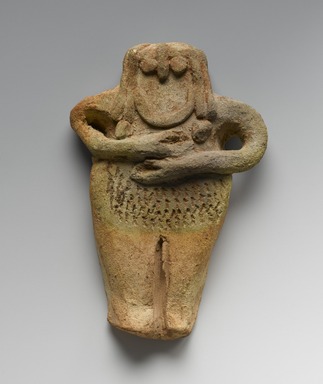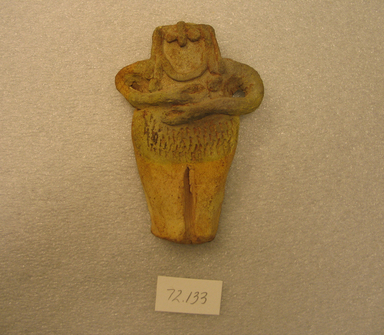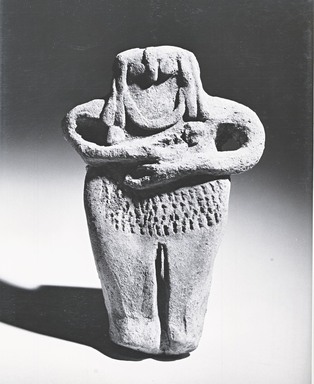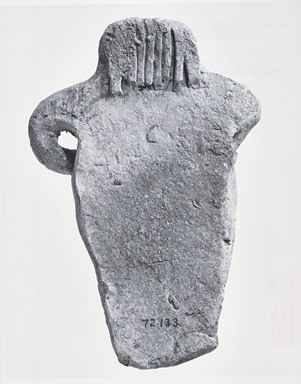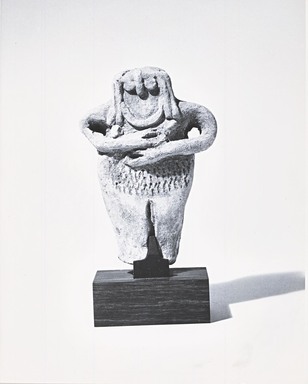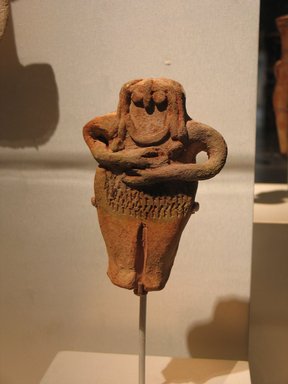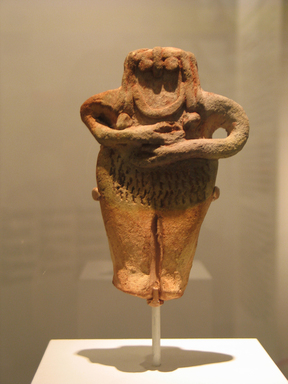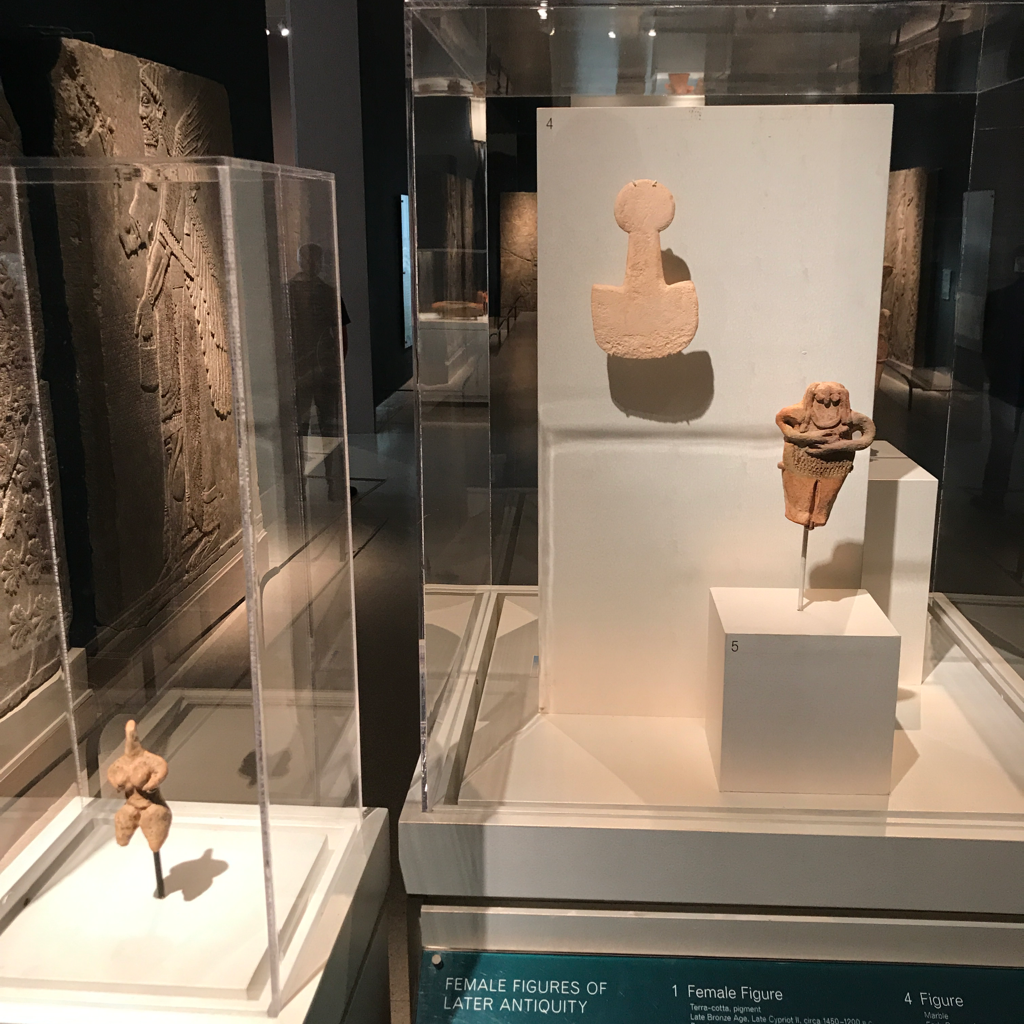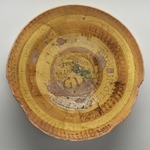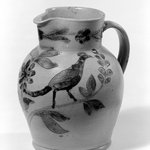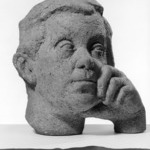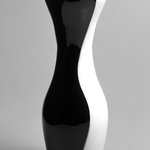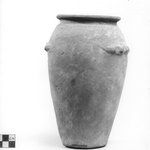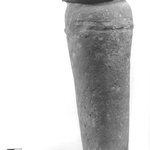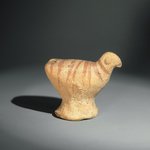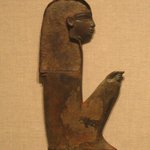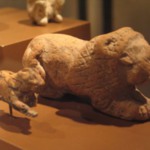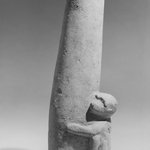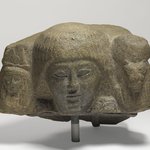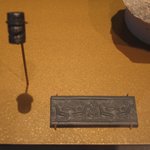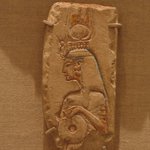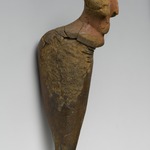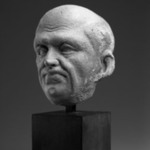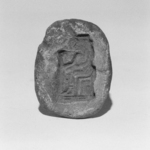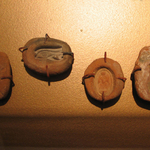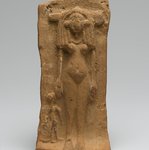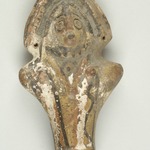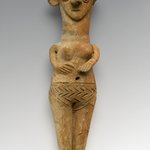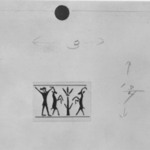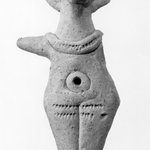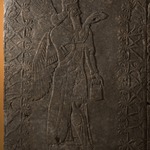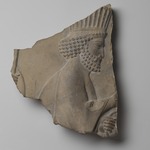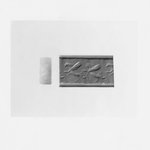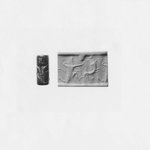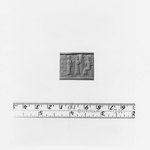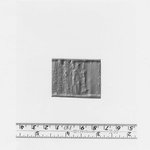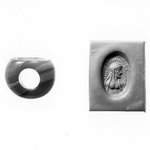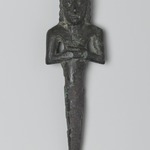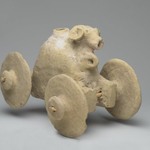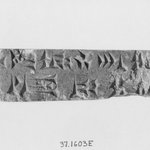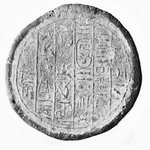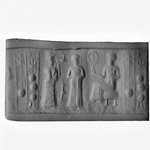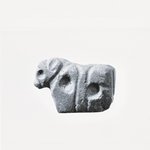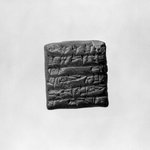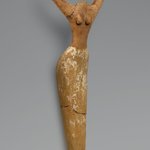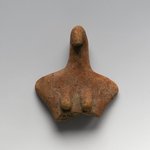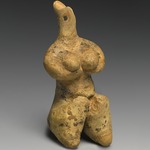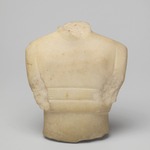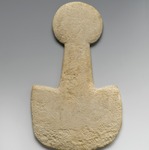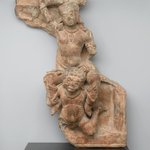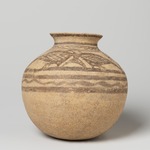Female Figurine
Egyptian, Classical, Ancient Near Eastern Art
The majority of ancient Near Eastern female figures emphasize their fertility. Although the three terracotta (baked clay) figures here come from very different times and places, all are nude and two have overlarge, patterned pubic areas. Their faces are rudimentary, with little or no indication of a mouth. The copper figure, though very schematically modeled, suggests a real woman with pulled-back hair and a bulging belly, wearing a knee-length skirt and carrying an infant on her back. In contrast, the marble image, with its circular head, long neck, and U-shaped body, is reduced almost to abstraction.
MEDIUM
Terracotta
DATES
late 3rd millennium B.C.E.
DIMENSIONS
5 1/2 x 3 9/16 x 13/16 in. (14 x 9 x 2 cm)
(show scale)
ACCESSION NUMBER
72.133
CREDIT LINE
Gift of Helena Simkhovitch in memory of her father, Vladimir G. Simkhovitch
MUSEUM LOCATION
This item is not on view
CAPTION
Ancient Near Eastern. Female Figurine, late 3rd millennium B.C.E. Terracotta, 5 1/2 x 3 9/16 x 13/16 in. (14 x 9 x 2 cm). Brooklyn Museum, Gift of Helena Simkhovitch in memory of her father, Vladimir G. Simkhovitch, 72.133. Creative Commons-BY (Photo: Brooklyn Museum, 72.133_PS2.jpg)
IMAGE
overall, 72.133_PS2.jpg. Brooklyn Museum photograph, 2008
"CUR" at the beginning of an image file name means that the image was created by a curatorial staff member. These study images may be digital point-and-shoot photographs, when we don\'t yet have high-quality studio photography, or they may be scans of older negatives, slides, or photographic prints, providing historical documentation of the object.
RIGHTS STATEMENT
Creative Commons-BY
You may download and use Brooklyn Museum images of this three-dimensional work in accordance with a
Creative Commons license. Fair use, as understood under the United States Copyright Act, may also apply.
Please include caption information from this page and credit the Brooklyn Museum. If you need a high resolution file, please fill out our online
application form (charges apply).
For further information about copyright, we recommend resources at the
United States Library of Congress,
Cornell University,
Copyright and Cultural Institutions: Guidelines for U.S. Libraries, Archives, and Museums, and
Copyright Watch.
For more information about the Museum's rights project, including how rights types are assigned, please see our
blog posts on copyright.
If you have any information regarding this work and rights to it, please contact
copyright@brooklynmuseum.org.
RECORD COMPLETENESS
Not every record you will find here is complete. More information is available for some works than for others, and some entries have been updated more recently. Records are frequently reviewed and revised, and
we welcome any additional information you might have.
Why are the female idols depicted as abstract figures?
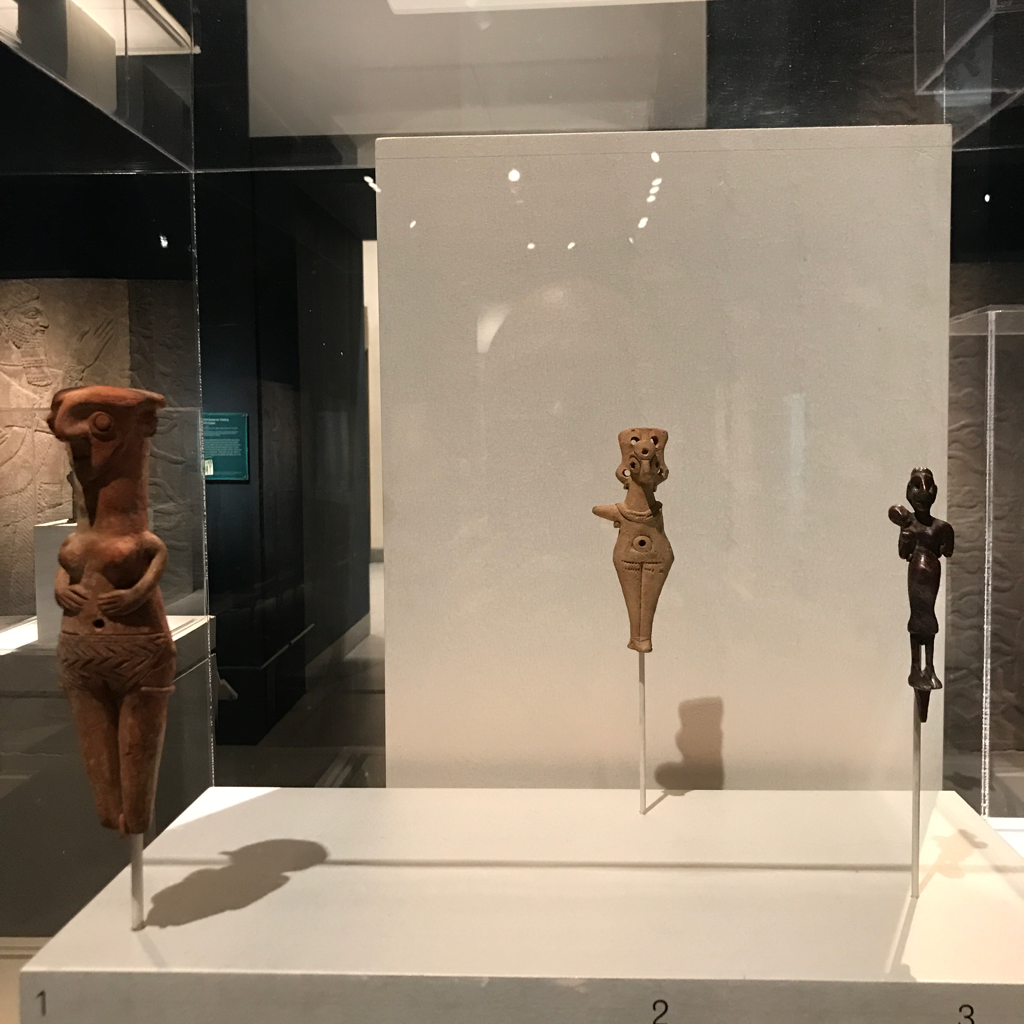
Lots of people wonder that! These small female figurines and ones like them are some of the oldest art works known in the worlds today. They predate writing so we can only speculate.
One theory is that communication was more important than realism. You may notice that breasts and pubic regions are emphasized leading scholars to believe that these were symbols of fertility. As long as the viewer could tell that the figure was a fertile woman, it has done its job, it does not need to be realistic. To the same end, these were produced in great numbers and it was easier to make somewhat abstracted figures.
Tell me more.
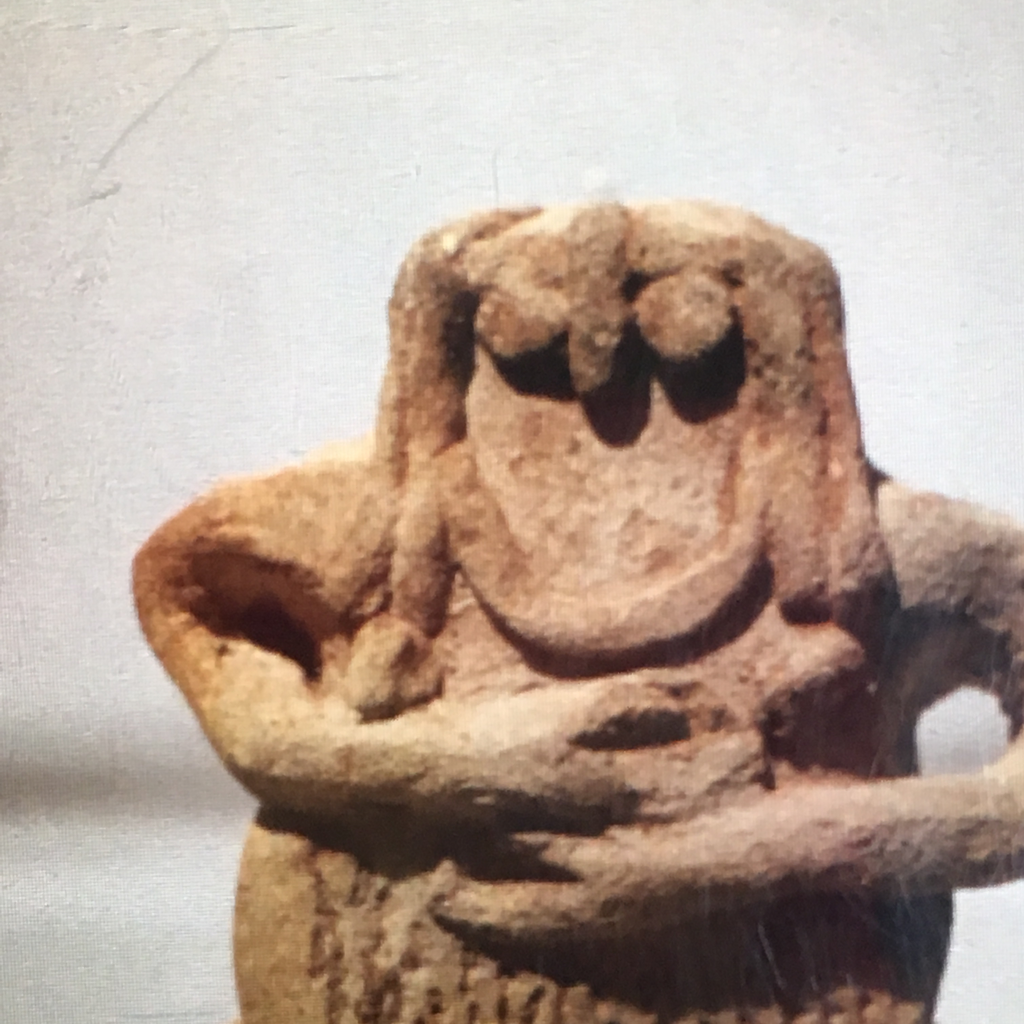
This is one of many fertility figurines from the ancient Near East. They were thought to aid women in conceiving and protect them during and after childbirth.
